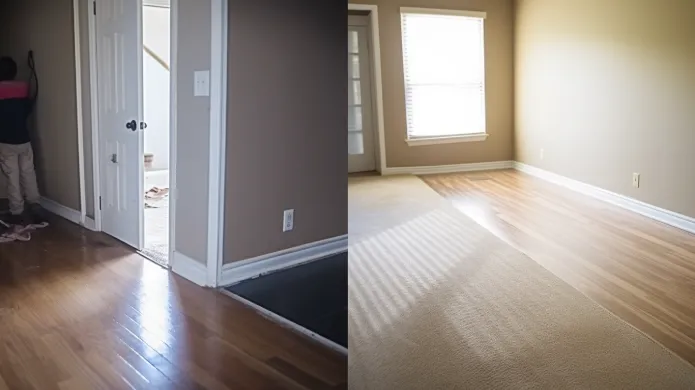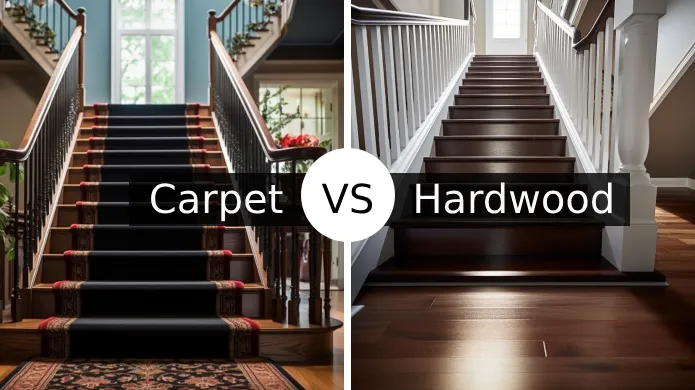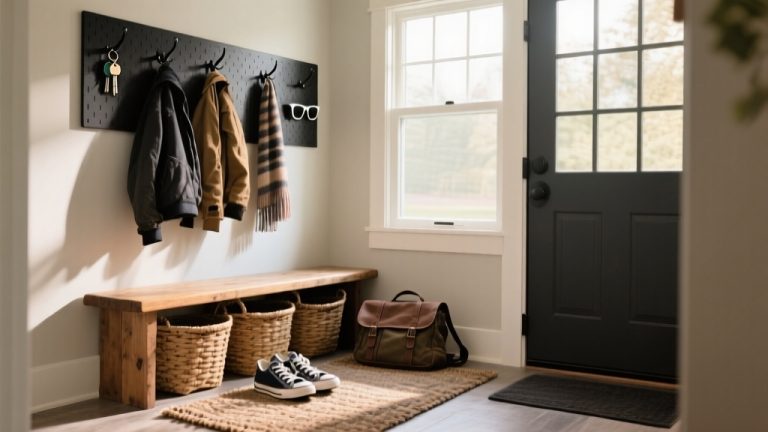How Much Does It Cost to Change Carpet to Hardwood: 4 Influencing Factors
The cost of changing your flooring from carpet to hardwood is a crucial consideration when embarking on a home improvement journey. Understanding the financial investment involved is key to getting it right.
The cost of transitioning from carpet to hardwood encompasses various factors, influencing the overall investment you’ll be making.
On average, the expenses include hardwood flooring materials ranging from $3 to $15 per square foot, coupled with labor costs of approximately $3 to $9 per square foot for installation.
These figures provide a general framework, but the final cost can vary based on factors like the type of wood chosen, labor rates in your area, and specific project requirements.
We will calculate how much it costs to replace carpet with hardwood, discuss factors that affect the cost, and how to save money.
How Much Does It Cost to Change the Carpet to Hardwood: Calculation in Detail with Factors
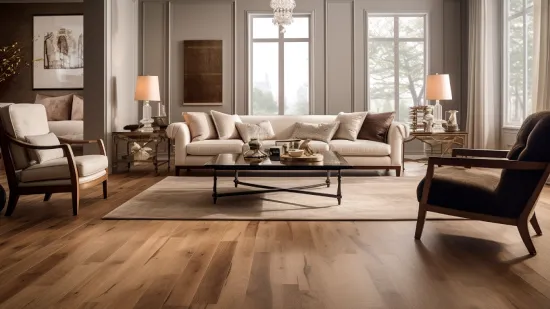
Transitioning from carpet to hardwood flooring involves several cost factors. The primary expenses include hardwood flooring per square foot and labor costs for installation.
On average, hardwood flooring materials can range from $3 to $15 per square foot, depending on the type of wood and quality. Labor costs typically add around $3 to $9 per square foot to the total.
For instance, if you’re considering a 300-square-foot area and choose mid-range hardwood at $8 per square foot, the material cost would be $2400 (300 sq ft × $8/sq ft).
Adding in labor costs at $6 per square foot, your total estimated cost would be around $4200 (300 sq ft × $6/sq ft).
Remember, these figures can vary based on factors like the type of wood, labor rates in your area, and any additional preparation or customization needs.
Factors That Affect the Cost of Replacing Carpet With Hardwood
There are several factors that contribute to the cost of transitioning from carpet to hardwood flooring. The following are among them:
- Type of hardwood chosen
- Scope of the job
- Installation expenses
- Additional work
Let’s talk about the factors in detail, so you can figure out how much it will cost.
1. Type of Hardwood Chosen
The price of different hardwood options varies widely, with some being more affordable than others. When considering the cost of changing carpet to hardwood, the type of hardwood chosen plays a significant role in determining the overall expenses.
For those on a budget, options like pine or oak can be more cost-effective, typically ranging from $3 to $6 per square foot.
On the other hand, hardwoods like Brazilian cherry or mahogany can be stunning choices if you desire a more luxurious and exotic look. However, these high-end options can cost upwards of $10 to $15 per square foot.
It’s important to consider your budget and desired aesthetic when selecting the type of hardwood, as it will greatly impact the project’s total cost.
2. Scope of the Job
The size of the area you’re replacing carpet with hardwood will directly impact the overall cost. To accurately determine the overall expenses, you’ll need to consider the scope of the job and measure the size of the area you’ll be replacing the carpet with hardwood.
The job scope refers to the extent of the work involved in the installation process. This includes removing the existing carpet, preparing the subfloor, and installing the hardwood flooring.
The larger the area you’re replacing, the more time and materials it will require, which will affect the overall cost.
Additionally, factors such as the complexity of the layout, any necessary repairs or modifications, and the type of hardwood chosen will also impact the scope of the job and, subsequently, the cost.
It is important to accurately measure the area to ensure you have an accurate estimate of the expenses involved in changing carpet to hardwood.
3. Installation Expenses
If you opt for professional installation, labor costs will be a significant factor. Labor costs for installation can vary based on location, complexity, and contractor expertise.
The more complex the installation, the higher the labor costs will be. For example, if the hardwood flooring needs to be installed on a staircase or in rooms with irregular shapes, it will require more time and skill, which will increase the labor costs.
Similarly, the location of the project can also affect labor costs. If you live in a remote area or a city with higher living expenses, you can expect higher labor costs than areas with lower living expenses.
Lastly, the expertise of the contractor can also impact labor costs. Contractors with more experience and skill may charge higher rates for their services.
It’s important to consider these factors when budgeting for your carpet-to-hardwood conversion project.
4. Additional Work
When it comes to changing carpet to hardwood, additional tasks often need to be taken care of. These extra jobs can increase the overall cost of the project.
For example, if your subfloor is not level, it will need to be addressed before the hardwood can be installed. This may involve leveling compounds or even completely replacing the subfloor.
Additionally, removing baseboards is often necessary when transitioning from carpet to hardwood. This process can be time-consuming, requiring careful removal and potential touch-up work afterward.
Finally, underlying issues like water damage or rot may also need to be addressed before the hardwood can be installed.
All of these additional tasks can add to the total cost of changing carpet to hardwood, so it’s important to factor them in when budgeting for your project.
What Are the Reasons to Transition From Carpet to Hardwood Flooring?
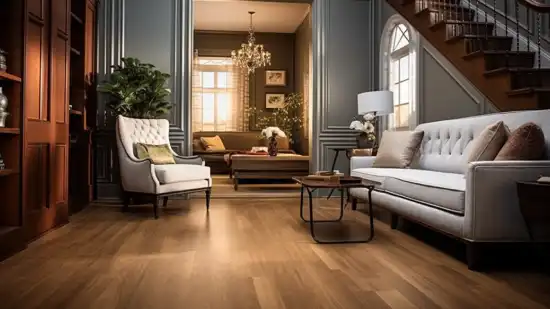
There are a number of reasons why it may be beneficial to switch from carpet to hardwood flooring. The following are among them:
1. Enhanced Appearance
Installing hardwood flooring can really transform the appearance of your home, giving it a more sophisticated and luxurious feel. Hardwood floors have a natural beauty that adds warmth and charm to any space.
The unique grain patterns and rich hardwood colors can enhance your home’s overall aesthetic appeal, creating a timeless and elegant look.
Unlike carpet, hardwood floors are easy to clean and maintain, making them a practical choice for homeowners.
With regular sweeping and occasional refinishing, hardwood floors can last for decades, providing a durable and long-lasting flooring option.
Whether you prefer a traditional or modern style, hardwood flooring can be customized to suit your personal taste and complement your existing decor.
2. Improved Cleaning and Maintenance
Hardwood floors are easier to clean and maintain compared to carpets. Regularly sweeping and damp mopping are key to keeping your hardwood floors looking their best. Unlike carpets, hardwood floors are easier to clean and maintain.
Sweeping should be done at least once a week to remove dust, dirt, and debris that can scratch the surface. Use a soft-bristle broom or a microfiber dust mop for best results.
In addition to sweeping, damp mopping should be done every two to four weeks to remove any built-up grime or spills.
Use a hardwood floor cleaner that is specifically formulated for your type of flooring. Avoid using excessive water or harsh chemicals, as these can damage the wood.
3. Increased Lifespan
Hardwood floors have a significantly longer lifespan compared to carpets. Regularly maintaining and caring for your hardwood floors will significantly increase their lifespan, allowing them to last for many years to come.
Hardwood floors are known for their durability and longevity, but they still require proper care to ensure they stay in optimal condition.
One of the key benefits of hardwood floors is their ability to be refinished multiple times, which can extend their lifespan even further.
4. Better Resale Value
Home buyers prefer hardwood floors which can increase your home’s resale value. Refinishing your hardwood floors every 7-10 years can significantly increase their resale value.
This is because home buyers highly seek hardwood floors and add a touch of elegance to any space.
When potential buyers see well-maintained hardwood floors, they perceive the overall value of the home to be higher. In fact, hardwood floors have been known to offer a high return on investment (ROI) compared to other flooring options.
Additionally, hardwood floors are durable and can last for decades with proper care. This longevity further adds to their resale value, as buyers prefer a flooring option that will stand the test of time.
How to Save Money on Replacing Carpet With Hardwood?
If you’re looking to save money on replacing carpet with hardwood flooring, consider several key points.
1. DIY Installation
You can save on labor costs if you take on certain installation tasks, such as removing baseboards or preparing the subfloor.
By doing these tasks on your own, you can eliminate the need to hire professionals, which can significantly reduce your overall expenses when changing carpet to hardwood.
Removing baseboards is a relatively simple task that requires a few tools, such as a pry bar and a hammer. It involves carefully prying off the baseboards from the walls, ensuring not to damage them.
Preparing the subfloor involves removing the existing carpet and padding and any nails or staples that may be left behind. This step ensures a smooth and level surface for the hardwood installation.
Remember to take your time and be careful when performing these tasks to avoid any unnecessary damage.
2. Remove Carpet Yourself
To save on labor expenses, remove the old carpet yourself, ensuring a smooth transition to hardwood flooring.
Begin by gathering the necessary tools: a utility knife, pliers, and a pry bar.
Carefully cut the carpet into manageable sections and roll them up for easy removal. Use the pliers to grip and pull out any staples or tacks securing the carpet to the floor.
Next, use the pry bar to lift the carpet padding and remove it gently. Inspect the floor for any remaining adhesive or residue, which can be removed using a scraper or adhesive remover.
Once the carpet and padding are completely removed, you can proceed with the hardwood flooring installation, knowing that you have effectively cut down on labor costs by tackling this step yourself.
3. Choose Affordable Materials
Consider opting for more budget-friendly materials like laminate or bamboo for your flooring project. These options can help you save money while achieving a beautiful, durable hardwood look.
Laminate flooring is made of synthetic materials that mimic the appearance of real wood, providing a cost-effective alternative. It is also easy to install and maintain, making it a popular choice for homeowners on a budget.
Bamboo flooring is another affordable option, known for its sustainability and durability. It is a natural material that offers any room a unique and stylish look.
Both laminate and bamboo flooring come in a variety of styles and colors, allowing you to find the perfect fit for your home.
4. Consider Engineered Wood
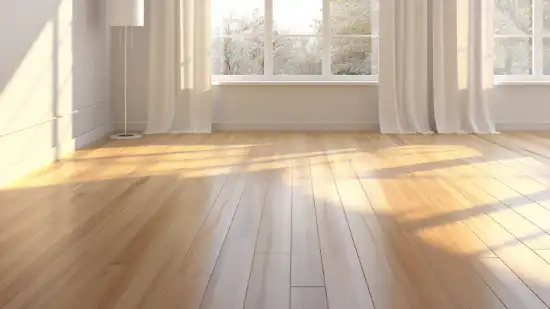
Engineered wood flooring offers a similar look and feel to solid hardwood, making it a cost-effective alternative. It is constructed with a top layer of real hardwood veneer that is bonded to multiple layers of plywood or high-density fiberboard. This construction method provides stability and durability, making it resistant to moisture and temperature fluctuations.
Engineered wood can be installed in various ways, including floating, glued, or nailed down, depending on the manufacturer’s recommendations and the condition of the subfloor. The cost of engineered wood flooring can vary depending on factors such as the type of wood veneer, the thickness of the wear layer, and the brand.
However, compared to solid hardwood, engineered wood flooring is generally more affordable, making it a popular choice for homeowners who want the look of hardwood without breaking the bank.
What lasts longer, carpet or hardwood?
Hardwood flooring clearly outlasts carpets, lasting between 50 to 100 years with proper care and maintenance. This extended lifespan is due to the sturdy construction of hardwood floors, made from durable materials that can withstand the wear and tear of daily use.
On the other hand, carpets have a relatively shorter lifespan, typically lasting around 10 to 15 years when well-maintained. The durability of carpets largely depends on the quality of the material used, as cheaper options tend to wear out more quickly.
Hardwood flooring, with its long-lasting nature, offers a significant advantage in terms of longevity, making it a wise investment for homeowners seeking a flooring option that will stand the test of time.
How long do you have to wait to put furniture on new hardwood floors?
After installing new hardwood floors, it’s advisable to exercise patience before placing the furniture back in its rightful spots. While waiting for an extended period is optimal, 2 to 3 days is generally sufficient.
This grace period allows the newly laid hardwood to settle and acclimate to its environment, reducing the risk of any potential damage.
It’s crucial to exercise caution when returning furniture, ensuring that protective pads or glides are used to prevent any scratching or denting of the surfaces.
Switch from Carpet to Hardwood with Confidence
The costing of transitioning from carpet to hardwood is clear, encompassing factors like the type of hardwood chosen, the scope of the job, installation expenses, and additional work.
These variables directly influence the total investment you’ll make in this home improvement endeavor. Remember, your choice of hardwood, whether cost-effective pine or luxurious Brazilian cherry, significantly impacts the expenses. The area’s size, intricate installations, and skilled labor all play roles in the final cost.
As you embark on this flooring transformation, consider these factors to achieve the perfect balance between cost, aesthetics, and durability. Your dwelling’s allure and value will express their gratitude.

